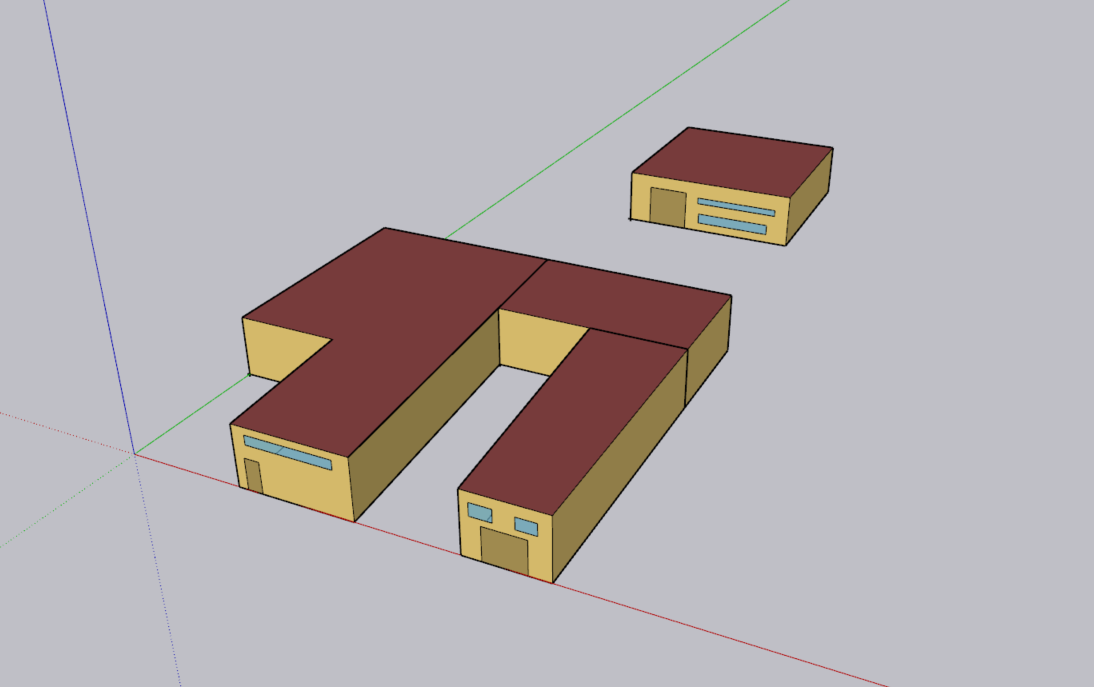Depends on what you're after.
An OSM/IDF model can only hold 1x building object. For urban-scale modelling of multiple (linked) pavilions (e.g. campus, district energy system supplying heat to 40 houses), something like URBANopt would be more suitable. Modelica supports multiple buildings/IDFs.
Otherwise, there's no issue having a single IDF with multiple pavilions (e.g. house + separate garage). It would be considered as a single facility/building, but you're free to sub-meter each pavilion.
EDIT: Adding meters via the OpenStudio Application requires a Measure, or e.g. an SDK-based script (Ruby, Python). That's the easy part. You'll find several interesting UMH posts on the art of combining end-uses and grouping meters, such as this one. Some are older (and possibly deprecated now); many though remain quite relevant.
Run UMH searches for "submeter", "sub meter" or "sub-meter". Depending on how these pavilions are linked, and especially what output/metrics you're after, you should get a sense of what pitfalls to avoid. I found these rather relevant (here and here). Yet again, it really depends on what you're after. Are the "bunch of building" you're modelling sharing common resources (any shared fluid flows, e.g. central chiller)? If so, the UMH posts I linked above should be helpful. I found the advice here really concise and relevant. Yet as suggested, if these buildings are otherwise running independently of each other (e.g. electric baseboards, mini-split HPs), then maybe consider running separate OpenStudio/E+ runs for each building/pavilion ...
2nd EDIT: In response to your other post/question, E+ can certainly cast shadows (from other pavilions, as shading objects) onto building surfaces. The arrangement of shading objects/surfaces around a modelled building should also affect simulated long-wave radiation with its environment (e.g. sky, ground). In fact, this may be a good case of when to model several pavilions (as thermal zones) in the same IDF, as I don't believe shading objects have (assumed) temperatures. That, in addition to local wind speed parameters and outdoor heat convection modelling options, is in IMHO the bulk of what E+ can do natively (more knowledgeable users can correct me).
Other microclimate effects are often factored in through weather file adaptations, either at city scales or for the immediate vicinity. Other work, FYI. Not saying using these is a walk in the park, but this is generally the preferred approach when considering microclimate. There's a nice E+ design enhancement request by LBNL staff here. I have no idea how far this has progressed since 2017.






